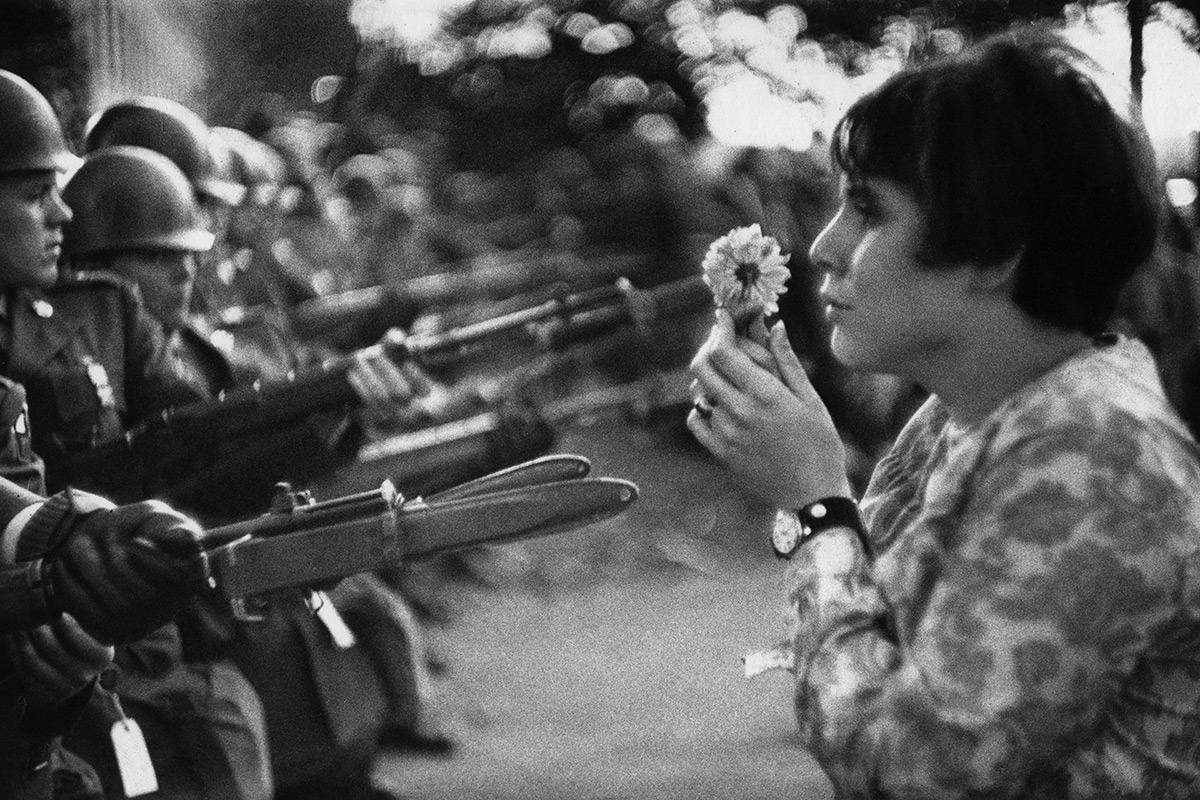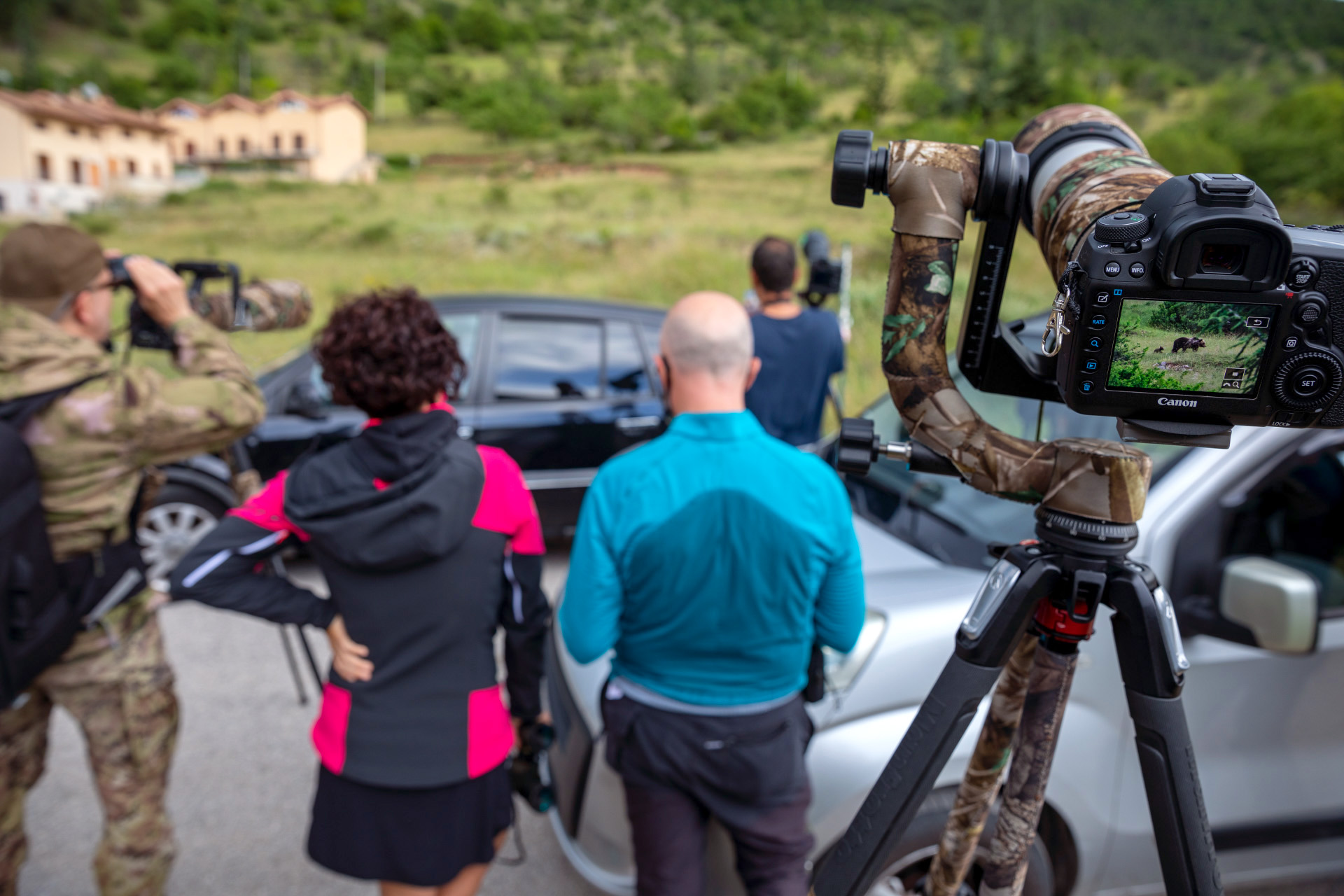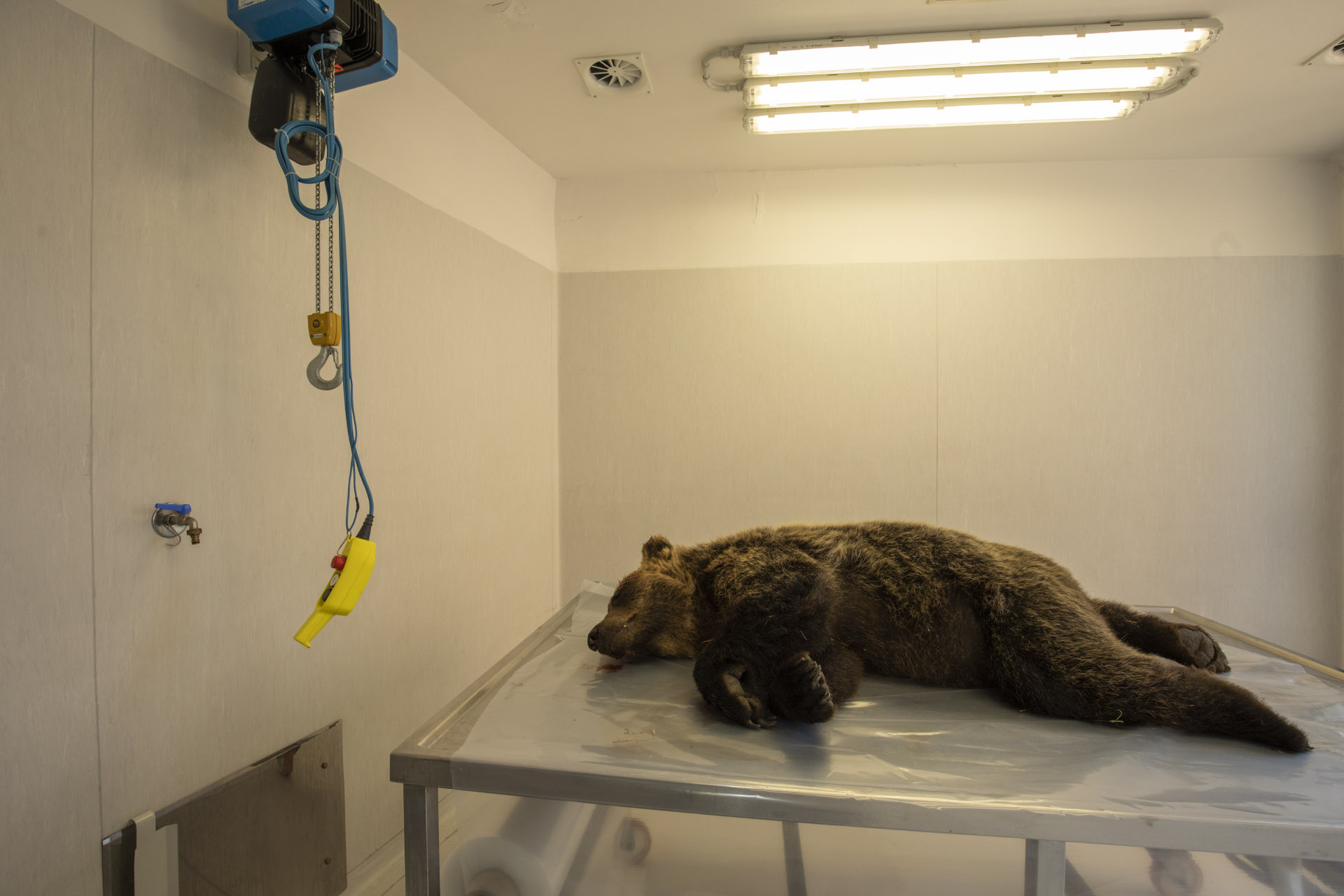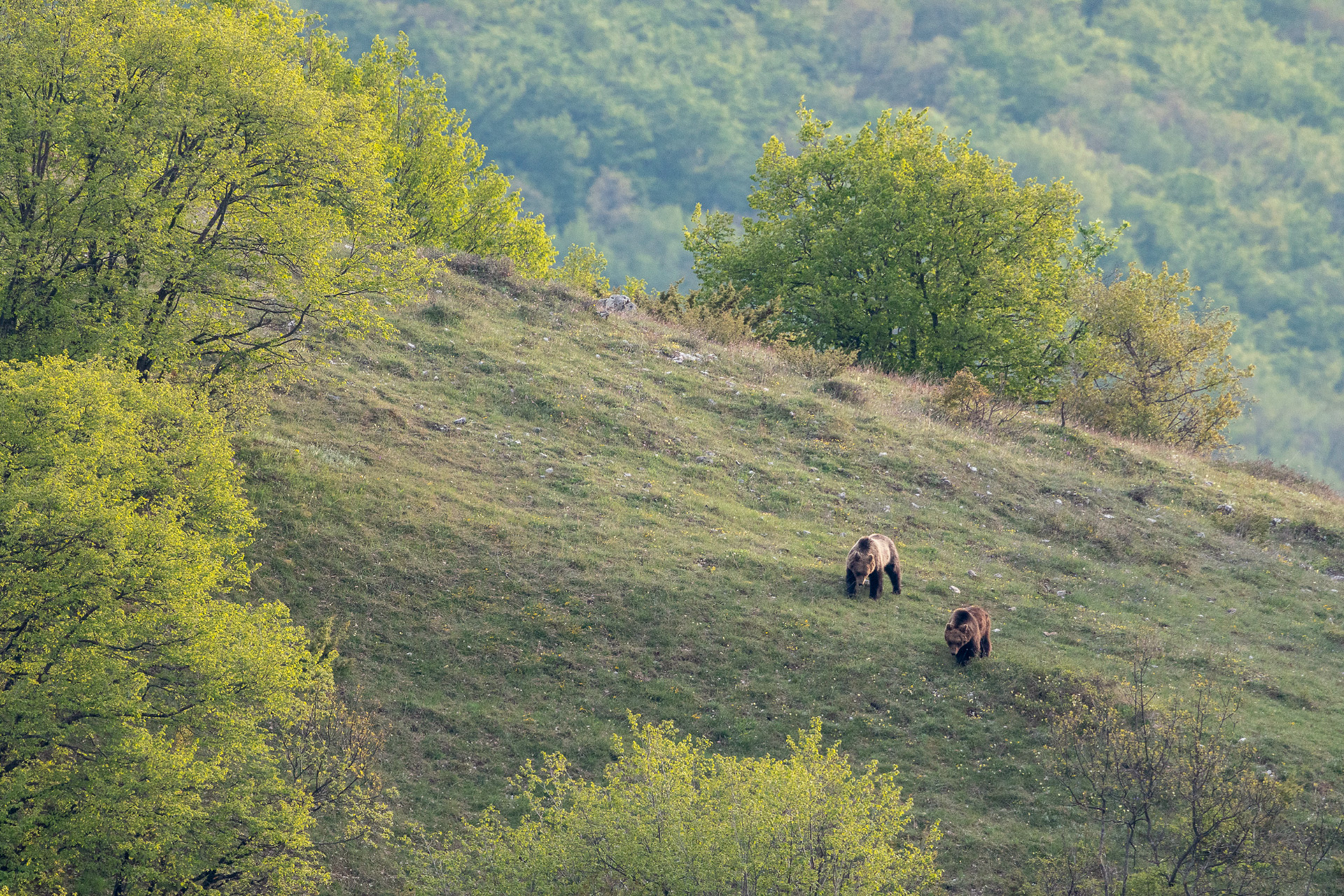Photographing a bear
When images exist for a reason
“A picture is worth a thousand words”. So goes a famous adage emphasising the communicative power of visual representations in explaining concepts, conveying messages and arousing emotions.
We live in a highly image-based society, not least because our central nervous system, basically that of a sophisticated fruit-eating primate, has evolved primarily on visual stimuli and is perfectly adapted to noticing and recording images, lines, shapes and colours. This is also reflected in the effect this can have on our daily lives and our emotional sphere.
All photographs are there to remind us of what we forget. In this (…) they are the opposite of paintings. Paintings record what the painter remembers. Because each one of us forgets different things, a photo more than a painting may change its meaning according to who is looking at it.
As human beings, it is easier for us to memorise an image rather than a phrase or a series of notes.
A good (not simply beautiful) image, such as a famous painting or a fine art photograph, is such because it respects certain canons (light, composition, subject) and these, like the parts or syntax of any language, enable it to speak to everyone, regardless of culture, geographical origin or social background. The same could certainly be said of, for example, music or literature, but the visual arts have the edge. This is because our species generally finds it easier to memorise an image rather than a sentence or a series of notes. And when we think of a film (or an experience), it is often single frames that stick in our memory, rather than sequences. Numerous studies have also shown that it is much easier to identify with situations and emotions experienced by others by observing them in pictures rather than through narrated stories. For example, just think of the desires aroused by the adverts that pass before us on the TV, or even more so, of the film scenes and photographs that have marked the last hundred or more years of human history, celebrating the joys, as well as the dramas, and stimulating our innermost selves, making us dream, cry or rejoice. Moreover, the possibility offered by photography and documentary film-making right from the start, to portray reality and reproduce it elsewhere in space and time, has always connotated these arts with a certain social value. Without wanting to go into the issue of actual or presumed truthfulness, photography and documentary film-making have often been entrusted with the task of bearing witness to what is happening, spreading information and offering keys to understanding the world.

Example of a famous image, which has influenced the conscience of a generation: “La jeune fille à la fleur”, demonstration against the war in Vietnam. Washington, 1967 © Marc Riboud, Collection du Musée d’Art moderne de la Ville de Paris
Today more than ever, the image is central in our lives. Not least thanks to the impact of digitisation.
No longer just drawings, illustrations, paintings, sculptures and photographic prints… these are now joined by the thousands of inputs we receive every day simply by scrolling on our phones. A visual binge to which we too contribute by recording and sharing dozens of photographs and videos on our smartphones, in the hopes that by so doing, we will in some way give greater value and relevance to events and moments in our lives and the lives of those around us. Digital technology has unquestionably revolutionised the world of images and the instant gratification it allows, multiplied by the sharing possibilities offered by Internet; it has brought the general public closer to photography, once quite restricted due to the costs and skills required by equipment and techniques. This has also had a great impact on so-called “nature” photography, in other words, the photography of natural subjects… phenomena, environments and the wild species living in them. For decades, this was a highly limited niche specialisation, practised by very few enthusiasts and almost completely neglected by the world of photography in general, traditionally associated mainly with a less documentary representation of reality or a more socially motivated content. So no-one expected the boom experienced by nature photography in recent years, no doubt helped by the enormous development of technologies and tools (not just high-performance cameras and lenses, but also photo-traps, drones, night-vision devices, camouflage clothing, etc.) created specifically for this activity and perhaps attracting the public as much as the potential images to be taken. And so, from a small circle of “initiates”, this photographic practice now numbers millions of enthusiasts all around the world, each in search of their own experience with nature and the wild.
I think a photograph, of whatever it might be – a landscape, a person – requires personal involvement. That means knowing your subject, not just snapping at what’s in front of you
Never as today, in a time of great upheaval and disorientation, has society felt such a need to reconnect or rediscover a balance with nature.
So any activity that can bring us closer to nature, taking us out of our homes and away from our screens, indubitably has positive implications. The discipline and attention required by nature photography, with its early rises, silent waits and hours of observation, can also represent a moment of rediscovered awareness, a beneficial alternative to the tight rhythms and habits of everyday life. But this growing number of enthusiasts and the increased demand for the possibility to enjoy natural environments and the “encounters” with their inhabitants that this entails, raises new issues in terms of ethics and the protection of habitats and species. An activity generally perceived as completely harmless and positive can actually have a much deeper and more lasting impact than we think. While limited and occasional frequentation may have had a minimal or even negligible effect on the environment, the human presence in natural habitats is today increasing considerably and steadily. There is also an ever more efficient and meticulous search for subjects, more widespread publicising of places and itineraries and the stimulus to each time obtain more captivating images, leading to the desire to get closer and closer. Although starting from absolutely noble aims, all this can have truly alarming effects. Beautiful flower-filled meadows are traversed by dozens of enthusiasts who, by their repeated passage, end up destroying the very object of their attention. Or the more timid animals may find themselves forced to share even the last recesses of the forest and the sacred hours of dawn and dusk with people, or the silences of the sky, ploughed by buzzing drones.

Dozens of enthusiasts, photographers and the curious concentrate on the outskirts of a small mountain town to get a close look at a family of bears.
This exponential increase in people looking for images of nature is being followed by an equally marked trend of ever greater criticality and this cannot fail to raise questions.
Could it be that an excess of desire and attention might irreparably compromise what is, after all, the object of our love? How far can you go to make an image? Can photography really help nature conservation? And what does this have to do with the story that The Bear and the Ant wants to tell? Since its conception, the soul of this deliberately multimedia project has been linked to images. It is no coincidence that two of the three authors are passionate about nature photography, including as professionals. Alongside a life spent in the great outdoors, above all gaining experience in the field and exploring the bear mountains of the Central Apennines, the team also “grew up” appreciating (and dreaming about!) photographs, illustrated books and documentaries. Over and above their respective professional backgrounds, they approached the world of conservation with the aspiration of putting all this cultural background into practice to spread the word. In this, they were aware that images were the best tool to attract attention and convey messages. Much of the project’s fieldwork has therefore been dedicated to creating impactful photos and videos, in other words, as aesthetically beautiful and clear in content as possible.
On the other hand, over the years, we have also witnessed the emergence of a greater sensitivity in nature photography, focussing on nature conservation related issues. The so-called “conservation photography”, a name coined some 20 years ago with the birth of the ILCP (International League of Conservation Photography), involves using the photographer’s skills and tools to document not just environmental emergencies, but also positive stories, spreading awareness of conservation challenges and opportunities. In practice, this translates into images of nature that not only set out to portray beauty, but also aspire to tell complex stories without excluding the human aspect, of ever greater relevance in the era of the so-called Anthropocene. This is a mission that often begins and continues well after the photo shoot.
The typical nature photograph shows a butterfly on a pretty flower. The conservation photograph shows the same thing, but with a bulldozer coming at it in the background. This doesn’t mean there’s no room for beautiful pictures, in fact we need beautiful images just as much as the issues. It does mean that the images exist for a reason; to save the Earth while we still can.

The lifeless body of a bear that died in 2019 in Molise from a vehicle collision lies on a laboratory table at the Teramo Zooprophylactic Institute awaiting necropsy.
Today, conservation photography has many followers who see in it a nobler and wiser purpose than their own efforts in the field. Alongside more classic images and stories, the media and even photo competitions are increasingly willing to publish and award content that informs and even denounces. But in fact, it has always existed. A century ago in the United States, the landscapes photographed by Carleton Watkins and Ansel Adams offered the nascent environmental movement visual support for creation of the national parks in the West. Just as some thirty years ago, work by photographers of the calibre of Mike “Nick” and Karl Amman were the first to show the world the destruction of the great forests of Africa’s Congo Basin, together with the scourge of “bush meat”. But together with this, their pictures in the international media also revealed the last intact places, actively contributing to the creation of protected areas. These are just a few examples. In recent decades, many images, reports and documentaries have played a decisive role in nature conservation. It is by choosing to walk in the footsteps of these people and backing the “cause” of bear conservation in the Apennines with images that “The Bear and the Ant” team set out to create a portfolio of images that would be varied, in-depth and, above all, engaging of this animal and its world. But to do this, we first had to consider a number of fundamental aspects.
To understand when to take a step back and give the bear the space and tranquillity it needs also means choosing to preserve its mystery.
Watching a bear in the wild is not just an unforgettable experience, but in a densely populated country such as Italy, it also has something miraculous about it. The bear is in fact a beautiful animal whose mere appearance is enough to immediately light up the landscape. Even from a distance, the sharp and unmistakable silhouette of this animal seems almost to pop out of the scene in three dimensions, making the air quiver and amplifying the scale of a place. Like a mark of origin, its presence certifies the quality and integrity of the area. So it is not hard to understand that many people long to meet this animal in the mountains and maybe to also manage to immortalise it with their camera.
But we mustn’t forget that the Marsican brown bear is also an endangered species and, therefore, protected by legislation. In addition to complying with this legislation and the regulations in force in protected areas, anyone going in search of bears must always consider that their attitude can have a not insignificant impact on their lives. These shy and reserved animals do not tolerate excessive violation of their privacy. As we’ve seen, they need space and tranquillity to live, safe areas where they can hibernate and give birth to their young and secluded places where they can feed in peace. Every move must therefore be well thought out, because it could lead to a negative response in the animal and expose it to risks. For the photographer or naturalist, this must not only be a problem, but also a great responsibility. When you are in the field, in the presence of a delicate animal like a bear, you must bring all your attention and sensitivity into play to avoid making what could sometimes be unforgivable mistakes.
Bears do not belong to the hunters. They do not belong to the bear-watchers. They belong to themselves and the landscape.
Faced with the dilemma of wanting to extensively document the life of this special animal, but without encroaching too much on its territory, the team therefore carried out their work in such a way as to reduce the disturbance as much as possible. For example, they chose to use long telephoto lenses, multipliers and cameras with small sensors to “get close” to the animals, perhaps sacrificing a little quality, but remaining at a safe distance. Extensive use was made of photo-traps, placed and monitored as discreetly and as infrequently as possible to prevent them being perceived as an intrusion. They obviously worked in close cooperation with the PNALM Authority and its experts to plan the field activities with the utmost respect for their tasks and the conservation needs. But above all, they have always worked with a certain “ecological empathy”, the only way to realise when the time has come to stop and step aside, even if it means giving up a sensational shot.
This is because, while the Project believes deeply in the importance of documentation and dissemination, it is also convinced that no photograph or observation can ever justify the intentional or persistent disturbance of a species, whether endangered or not. This may perhaps seem naive, if not downright hypocritical, when there are unfortunately still too many bears that die from human causes, or hectares of natural habitats irretrievably lost to the most disparate exploitation and “valorisation” activities. But it is perhaps wrong to evaluate the various types of disturbance according to their relative severity alone, rather than as a whole. The battle to preserve species and their environment must be waged on multiple fronts, each with its own strategic relevance. And understanding when to take a step back, to give the bear the space and tranquillity it needs, also means choosing to preserve the mystery that makes this animal’s existence among our mountains so magical and precious.

A female and male bear walk side by side during mating season. Image obtained at a great distance to avoid disturbing the animals and emphasize the environmental context.
Through our work as photographers, we are the first able to give a voice to bears and their environments, arousing emotions and disseminating information on the opportunities and critical issues surrounding their conservation.
To survive, bears and nature need to be part of our lives, now more than ever. But nature also needs us to enter the scene with a greater awareness of our impact. As photographers we have a huge opportunity to inform and influence change in people, but pressing the shutter is only the beginning. There is, in fact, a great deal of work to be done before and after the shot. Photographing nature is also a responsibility and imposes certain questions: can what I do alter the behaviour of what I observe? When should I stop? What do I want to tell and why? How can my story contribute to the conservation and protection of nature?
- Study in depth the ethological and biological characteristics of your photographic subject and the places you are going to visit, well before going into the field and plan your activities with them in mind.
- Give priority to the protection of nature and well-being of the subjects rather than the pursuit of photographic images, even if it means giving up a shot.
- Minimise the disturbance of the natural environment, avoid altering it for a better view or framing and respect its silence.
- Respect the wildness of the animals. Do not use bait or attractants and do not habituate them to your presence. Bears that have lost their mistrust and become accustomed to human food can create a risk for both people and themselves.
- Study and know legislation and regulations. Each natural site and animal species has its own peculiarities. Wild flora and fauna are state property and are institutionally protected by various national and international regulatory instruments. Plans and regulations are therefore drawn up for protected areas.
- Be transparent in the captions of your photographs and share how they were taken and also state whether you were authorised by the relevant authorities.
- With your photos, captions, publications, lectures or workshops, help spread knowledge of the nature around you, educate and raise awareness of models of environmental know-how and responsibility;
- Also capitalise on your work in other ways, for example, by collaborating with conservation NGOs in your region or with the media, or communicating with the scientific world and conservation agencies.

